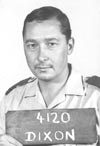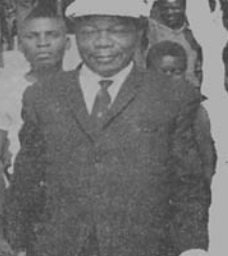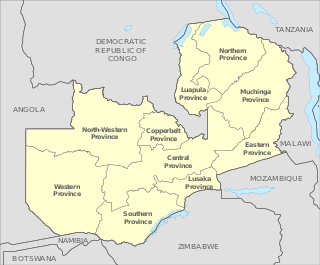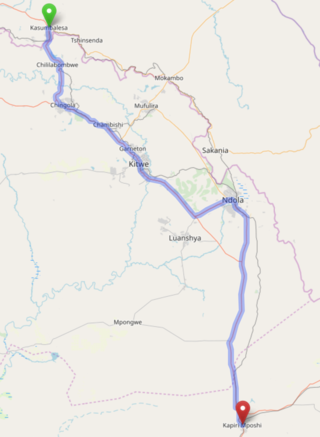Related Research Articles

Zambia, officially the Republic of Zambia, is a landlocked country at the crossroads of Central, Southern and East Africa. It is typically referred to being in South-Central Africa or Southern Africa. It is bordered to the north by the Democratic Republic of the Congo, Tanzania to the north-east, Malawi to the east, Mozambique to the southeast, Zimbabwe and Botswana to the south, Namibia to the southwest, and Angola to the west. The capital city of Zambia is Lusaka, located in the south-central part of Zambia. The population is concentrated mainly around Lusaka in the south and the Copperbelt Province to the north, the core economic hubs of the country.
The history of Zambia experienced many stages from colonisation to independence from Britain on 24 October 1964. Northern Rhodesia became a British sphere of influence in the present-day region of Zambia in 1888, and was officially proclaimed a British protectorate in 1924. After many years of suggested mergers, Southern Rhodesia, Northern Rhodesia, and Nyasaland were merged into the British Federation of Rhodesia and Nyasaland.

The Zambian Defence Force is the military of Zambia. It consists of the Zambian Army, the Zambian Air Force, and the Zambia National Service. The defence forces were formed at Zambian independence on 24 October 1964, from constituent units of the dissolved Federation of Rhodesia and Nyasaland Armed Forces. During the 1970s and 1980s, it played a key role in a number of regional conflicts, namely the South African Border War and Rhodesian Bush War. Being a landlocked country Zambia has no navy, although the Zambian Army maintains a maritime patrol unit for maintaining security on inland bodies of water.
Telecommunications in Zambia includes radio, television, fixed and mobile telephones, and the Internet.

The Zimbabwe Broadcasting Corporation (ZBC) is the state-owned broadcaster in Zimbabwe. It was established as the Rhodesian Broadcasting Corporation (RBC), taking its current name in 1980. Like the RBC before it, the ZBC has been accused of being a government mouthpiece with no editorial independence.

Squadron Leader Christopher John Taylor Dixon D.C.D., also known by his callsign of Green Leader, was a Rhodesian military pilot for the Rhodesian Air Force and was born in Shabani, Southern Rhodesia. He was best known for leading the Rhodesian Operation Gatling bombing raid over Zambia, which later became known as the "Green Leader Raid".
Alick Nkhata (1922–1978) was a Zambian musician, freedom fighter and broadcaster from the 1950s to the mid-1970s. He was also the director of the Zambia National Broadcasting Corporation (ZNBC), and formed the Lusaka Radio Band, later called the Big Gold Six Band. The band played Zambian music and scored translations of original rural songs.

Harry Mwaanga Nkumbula was a Zambian nationalist leader involved in the movement for the independence of Northern Rhodesia, as Zambia was known until the end of British rule in 1964. He was born in the village of Maala in the Namwala district of Zambia's southern province. He was the youngest of three children and the only son.

The following outline is provided as an overview of and topical guide to Zambia:
Zambia, officially known as the Republic of Zambia, is a landlocked country in Southern Africa. The neighbouring countries are the Democratic Republic of the Congo to the north, Tanzania to the north-east, Malawi to the east, Mozambique, Zimbabwe, Botswana, and Namibia to the south, and Angola to the west. The capital city is Lusaka, located in the southeast of the country. The population is concentrated mainly around the capital and the Copperbelt to the northwest.
Rugby union in Zambia is a minor but growing sport. The Zambia national rugby union team is currently ranked 67th by World Rugby. The Zambia Rugby Football Union has 9880 registered players and three formally organised clubs.

Lusaka is the capital and largest city of Zambia. It is one of the fastest-developing cities in southern Africa. Lusaka is in the southern part of the central plateau at an elevation of about 1,279 metres (4,196 ft). As of 2019, the city's population was about 3.3 million, while the urban population is estimated at 2.5 million in 2018. Lusaka is the centre of both commerce and government in Zambia and connects to the country's four main highways heading north, south, east, and west. English is the official language of the city administration, while Bemba, Tonga, Lenje, Soli, Lozi, and Nyanja are the commonly spoken street languages.

Mass media in Zambia consist of several different types of communications media: television, radio, cinema, newspapers, magazines, and Internet-based Web sites. The Ministry of Information, Broadcasting Services and Tourism is in charge of the Zambian News Agency which was founded in 1969. Due to the decolonization of the country, it ultimately allowed the media sector of the country to flourish, and enabled the establishment of multiple different new outlets, as well as established a new news consumption culture that wasn't previously known to Zambia. Furthermore, due to the short-wave capabilities, and international increase in production, demand, and sales of the transistor-radios in the country it made it increasingly more difficult to control the media outlets throughout Zambia by the leaders of the government.
Freedoms of expression and of the press are constitutionally guaranteed in Zambia, but the government frequently restricts these rights in practice. Although the ruling Patriotic Front has pledged to free state-owned media—consisting of the Zambia National Broadcasting Corporation (ZNBC) and the widely circulated Zambia Daily Mail and Times of Zambia—from government editorial control, these outlets have generally continued to report along pro-government lines. Many journalists reportedly practice self-censorship since most government newspapers do have prepublication review. The ZNBC dominates the broadcast media, though several private stations have the capacity to reach large portions of the population.

Paul Monde Shalala, is an internationally renowned and award-winning Zambian journalist, blogger, and political analyst specializing on Zambian, African and world current affairs. He is a reporter for the Zambia National Broadcasting Corporation.

The T3 is a Trunk Road in Zambia. The road runs from Kapiri Mposhi via Ndola, Kitwe and Chingola to Kasumbalesa on the border with DR Congo. The entire route is a toll road.
Dora Siliya is a politician in Zambia. She is the former member of parliament for Petauke Central and the former Minister of Communication and Broadcasting.
The Zambian National Division One is the second highest football division for men in Zambia and was introduced for the 2019/20 season with 18 teams. The league is administered by Zambian Premier League and is because of sponsorship reasons called Eden University National Division One League, as Eden University and FAZ signed a five year's agreement prior the inaugural season. The league operates on a system of promotion and relegation with Zambia Super League and Zambian Division One, and is played over 34 games.
Kazungo Emmanuel Ndeya popularly known as Ken Dumbo is a Zambian radio and television presenter and comedian. In October 2020, he won the Diamond TV Best Zambian Social Media Comedian of the year award at the Zambian Personality Awards. A year before, he won the Best Zambian Wedding MC Award.
References
- 1 2 Horizon: The Magazine of the Rhodesian Selection Trust Group of Companies, Volume 7, 1965, page 21
- ↑ EBU Review: Radio and Television Programmes, Administration, Law, Issue 83, Administrative Office of the European Broadcasting Union, 1964, page 27
- ↑ African Broadcast Cultures: Radio in Transition, Richard Fardon, Graham Furniss, James Currey Publishers, 2000, page 23
- ↑ Wayaleshi, Pierre Fraenkel, Weidenfeld and Nicolson, page 195
- ↑ Broadcasting in Africa: A Continental Survey of Radio and Television, Sydney W. Head, Temple University Press, 1974, pages 125-127
- 1 2 World Broadcasting: A Comparative View, Alan Wells, Greenwood Publishing Group, 1996, pages 157-159
- ↑ Friends for Life, Friends for Death: Cohorts and Consciousness Among the Lunda-Ndembu, James Anthony Pritchett, University of Virginia Press, 2007, page 115
- ↑ A note on the ‘Saucepan Special’: the people's radio of Central Africa, Rosaleen Smyth, Historical Journal of Film, Radio and Television, Volume 4, 1984 - Issue 2, pages 195-201
- ↑ E.B.U. Review: General and legal. B, Issues 71-76, Administrative Office of the E.B.U., 1962, page 12
- ↑ The Statesman's Year-Book: Statistical and Historical Annual of the States of the World for the Year 1957, S. Steinberg, Springer, page 286
- ↑ BBC Handbook, BBC, 1956, page 132
- ↑ Africa Media Review, Volumes 3-4, page 75
- ↑ The Statesman's Year-Book 1964-65, S. Steinberg, Springer, page 472
- ↑ Listening, Looking and Learning: Report on a National Mass Media Audience Survey in Zambia (1970-73), Graham Mytton, Institute for African Studies, University of Zambia, 1974, page 33
- ↑ "World Communications" (PDF). UNESCO. 1975. p. 132. Retrieved 19 April 2024.
- ↑ EBU Review: Radio and Television Programmes, Administration, Law, Issue 83, Administrative Office of the European Broadcasting Union, 1965, page 27
- ↑ Africa Media Review, Volumes 3-4, African Council on Communication Education, page 75
- ↑ Area Handbook for Zambia, Volume 550, Issue 75, Irving Kaplan, American University (Washington, D.C.). Foreign Area Studies U.S. Government Printing Office, 1969, page 255
- ↑ Zambia, John P. Sangwa, Article 19, Freedom of Expression Institute, Media Institute of Southern Africa, 1998, pages 10-11
- ↑ Handbook of the Commonwealth Broadcasting Association, Secretariat, Commonwealth Broadcasting Association, 1988, page 147